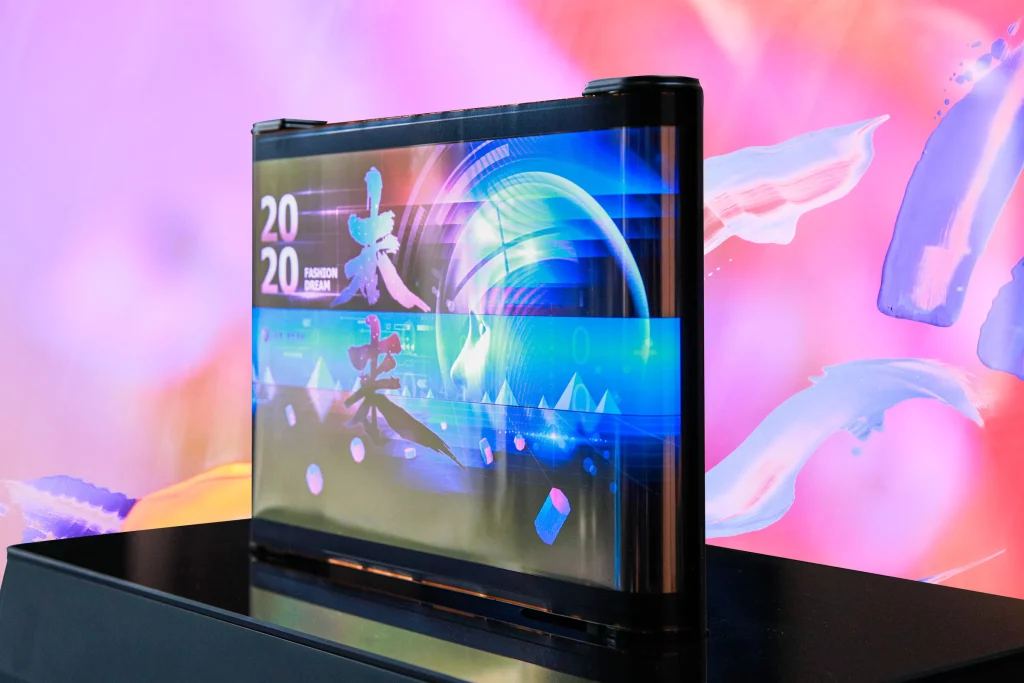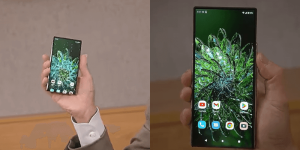When you want it, your future mobile gadget could be able to roll up or expand to a more convenient size.
Lenovo displays a rollout display laptop, while Motorola advertises its rollout smartphone. Rollable electronics, according to experts, maybe a step up from the folding screens that have recently been popular.
“Rollable displays give a bigger effective screen area, giving users with more details as well as a larger surface area, which can benefit in multitasking,” said technology consultant and IEEE Life Fellow Tom Coughlin in an email conversation with Lifewire. “Rollable displays also have the potential to increase accessibility.”
Motorola’s latest rollable concept phone stands just over 4 inches tall and retracts to a pocketable size smaller than most mobile devices on the market. “Whether it’s a 6.5″ screen for intense gaming or a retractable size for on-the-go simplicity,” the business noted in a news release.
According to Nick Brill, director of product development at hardware company VisionTek, rollable gadgets provide consumers with bigger screens in a smaller, more portable footprint.
“Many people have gone to 24-27 inch or bigger displays to complement their laptop at their workstation,” he noted. “This gives them a larger screen on the run.”
Notebooks that fold
A new generation of folding displays, like the ASUS Zenbook 17 Fold OLED, has also recently reached the market, allowing customers to have a laptop, tablet, desktop, e-reader, and more all in one package.
“A foldable or rollable screen allows users to multitask on a full-sized display without the need for extra supporting devices,” Yen Hoang, public relations manager for ASUS North America, told Lifewire in an email. “For example, the Zenbook 17 Fold OLED’s screen is 17 inches, yet it folds down to be portable or utilized as a tablet. This new computer method allows people more control and freedom to work and plays in ways that suit their lifestyles.”
Lenovo’s new X1 Fold, which the firm says is the world’s lightest 16-inch laptop, is another new foldable. Compared to earlier Lenovo Fold series folding laptops, the new model sports a 22% bigger 16-inch folding OLED display, a 25% slimmer frame, and thinner bezels.
“Developing the world’s first foldable PC was a significant technological challenge.” Improving on that is a significant accomplishment. We want the next-generation ThinkPad X1 Fold to set the standard for premium productivity, creativity, and enjoyment,” said Jerry Paradise, Lenovo’s vice president of commercial product Center, Intelligent Devices Group, in a news release.
Brill projected that larger rollable, such as external monitors or laptops with deployable larger second screens, would be on the horizon. Laptops with a bigger pop-out screen in addition to the regular display, he believes, would be handy.
Samsung has demonstrated an experimental rollable display that expands from 13″ to 17″ and only shows static pictures. There’s even talk that Apple will get into the rollable game shortly. According to CCS Insight, Apple will likely begin offering a foldable iPad in 2024. According to the company, the iPhone will cost approximately $2,500.
The reported rollable iPhone’s pricing underscores the prohibitive expense of rollable or foldable products. The new ThinkPad X1 Fold, for example, costs $2499. Conversely, Coughlin projected that if rollable and foldable phones and other products became popular, production volume would grow, lowering costs.
Coughlin also stated that additional apps would be developed to use the elastic properties of these gadget screens. The gadgets may change in novel ways based on how people use flexible screens. Flexible displays might potentially be used in other applications, such as apparel.
“In the future, when this technology gains popularity, advanced development might lead to lighter, more energy-efficient, more flexible, and longer-lasting display technology that could be applied in other goods,” Coughlin noted.
Read:
- New Galaxy Fold may come with a glass screen instead of plastic
- The Motorola RAZR is the best use of a foldable touchscreen yet
- Samsung offers Galaxy Fold users onetime replacement of touchscreen






 British Lawmakers Vote To Recognize Crypto As Financial Instrument
British Lawmakers Vote To Recognize Crypto As Financial Instrument